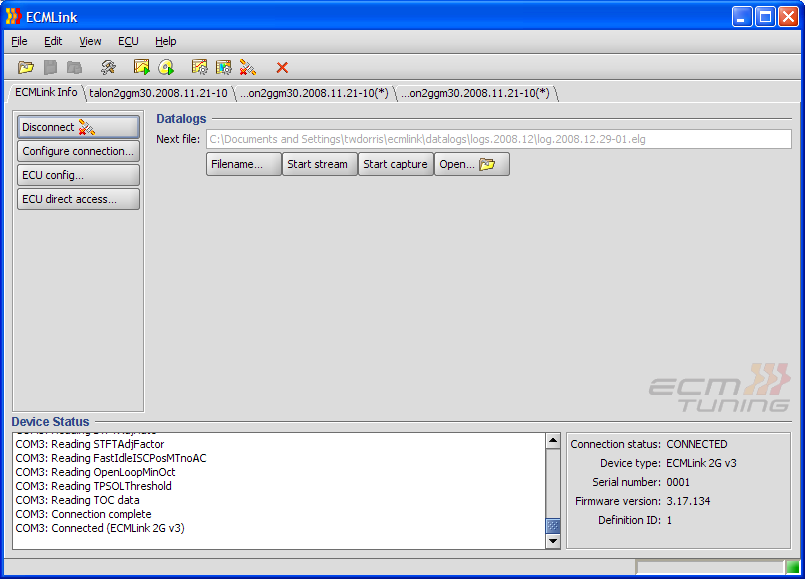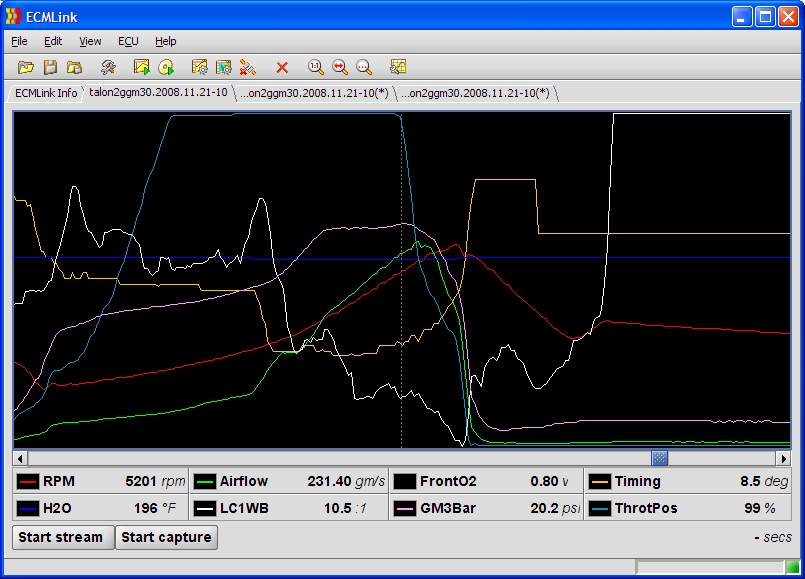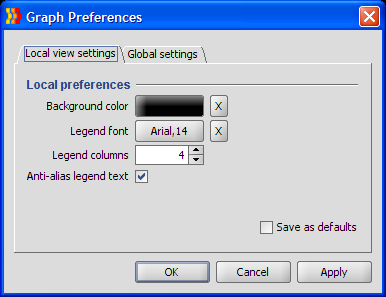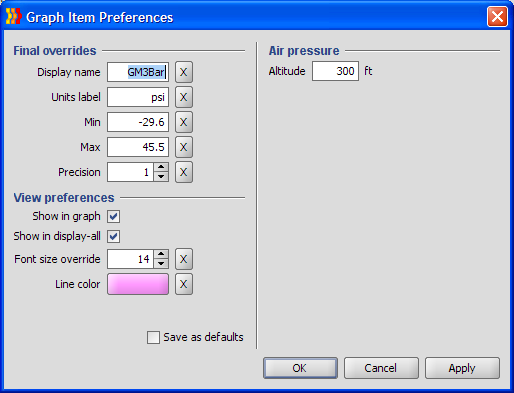Table of Contents
ECMLink (V3) Screenshots
As required by internet law, here are some screen shots of the ECMLink application in use. ![]() Of course, you can click on the image thumbnail to get a better (larger) view. This is by no means a user manual. The ECMLink application includes a number of help pages built in. This page is just an overview to get a quick general idea of what the application is like.
Of course, you can click on the image thumbnail to get a better (larger) view. This is by no means a user manual. The ECMLink application includes a number of help pages built in. This page is just an overview to get a quick general idea of what the application is like.
Basic operation
ECU configuration
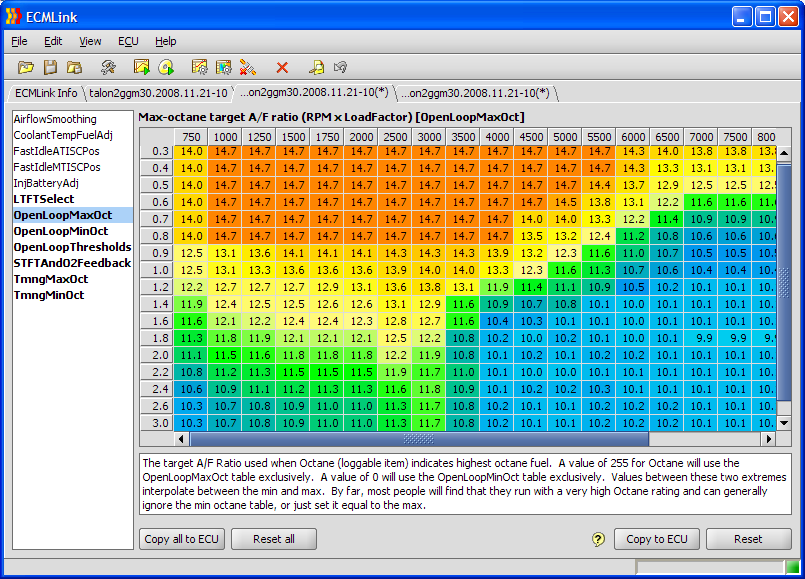 | DirectAccess is cool…very cool. It provides direct, low-level access to a variety of factory tables. This shot shows the ECU's target A/F ratio while running open loop. |
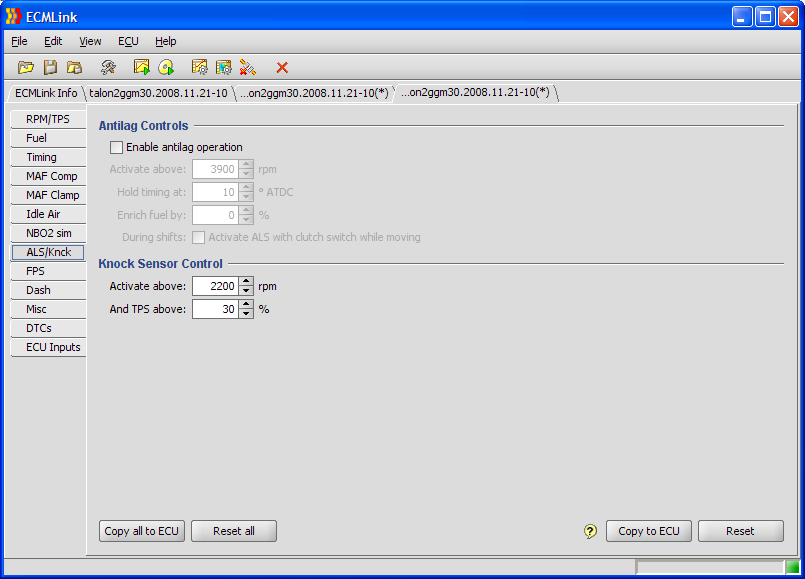 | Basic antilag and knock control tab. |
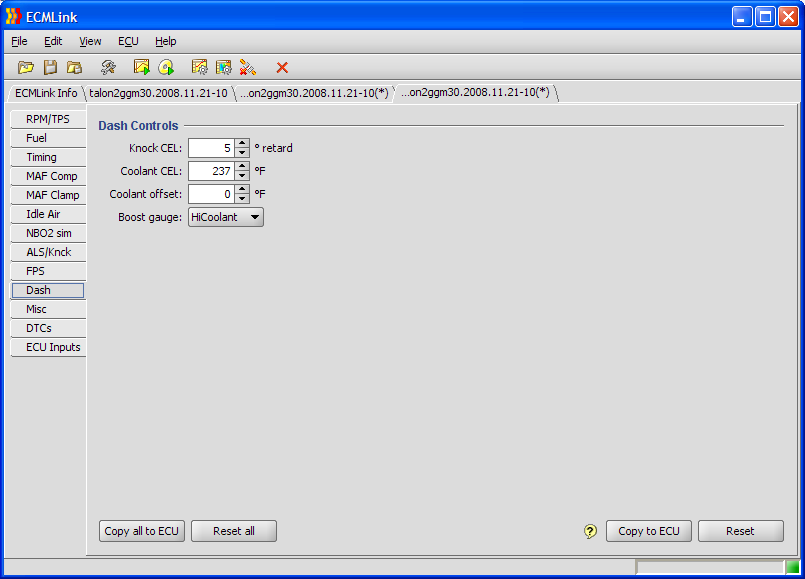 | Basic dash controls. |
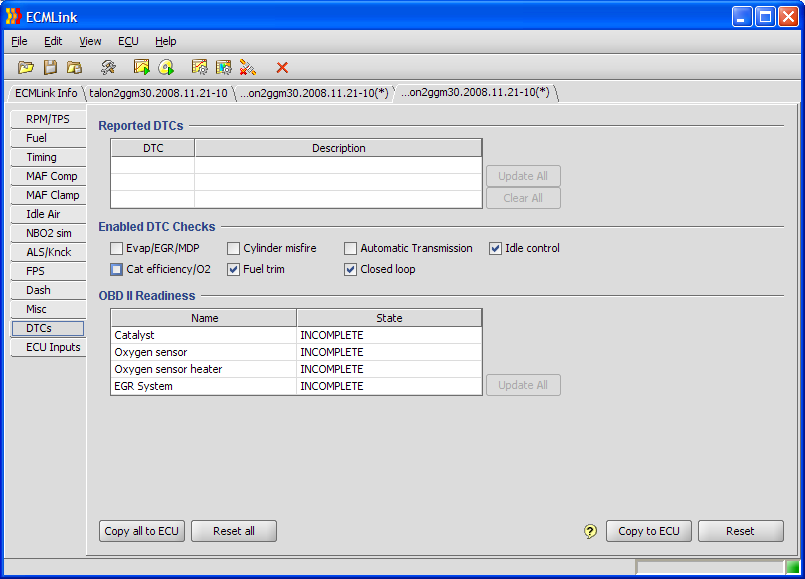 | Basic control over diagnostic trouble codes (DTCs) |
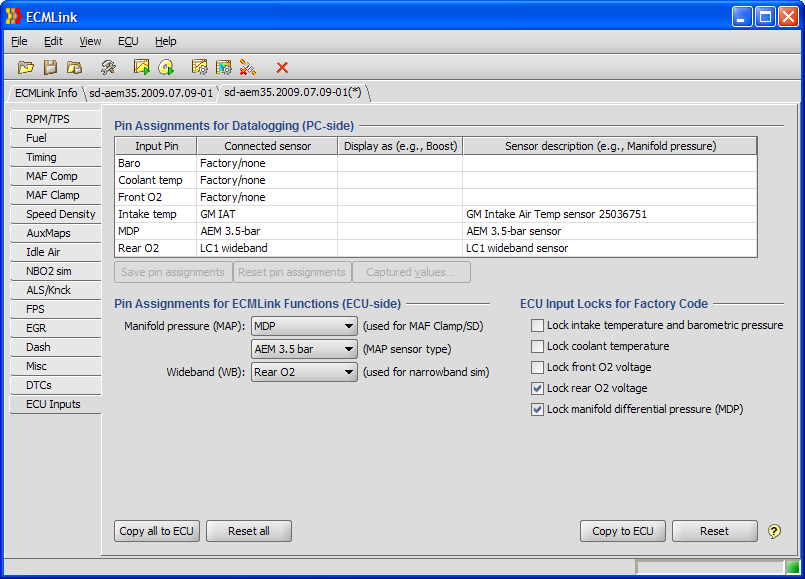 | Configuring ECU inputs is a good bit different in ECMLink (V3). Here you tell the application what's connected where and then you tell the ECU where it can find certain sensors and which inputs it should hide or lock from factory code because the sensors connected to those inputs may be missing or replaced with something entirely different. |
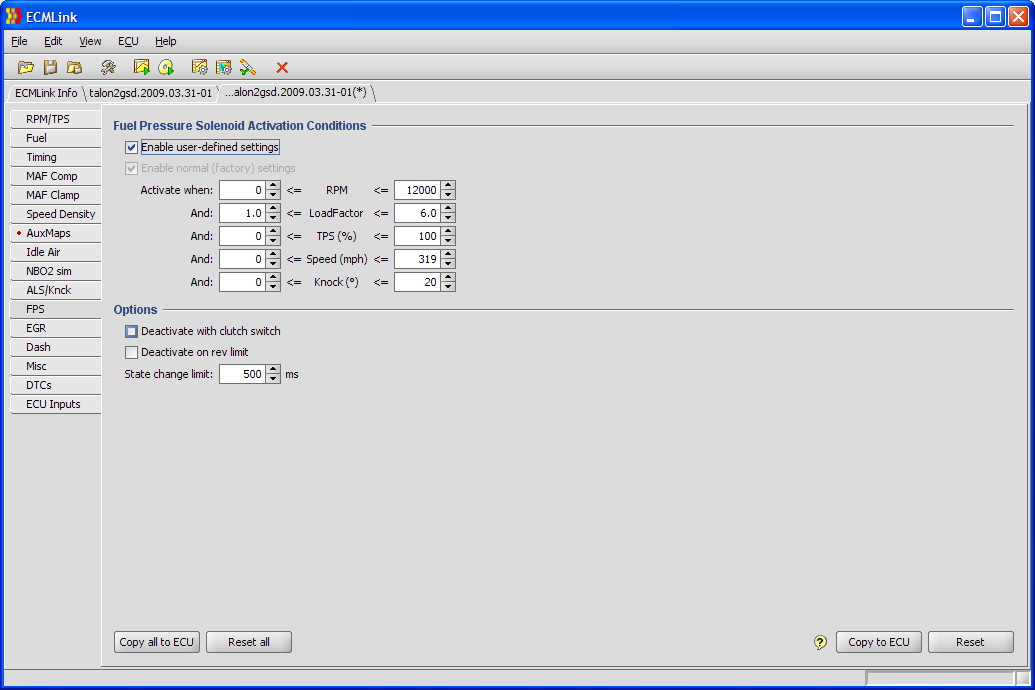 | Greatly extended control over the fuel pressure solenoid and EGR solenoid outputs of the ECU. Use these to control nitrous activation, meth injection, BOV overrun, etc., etc. |
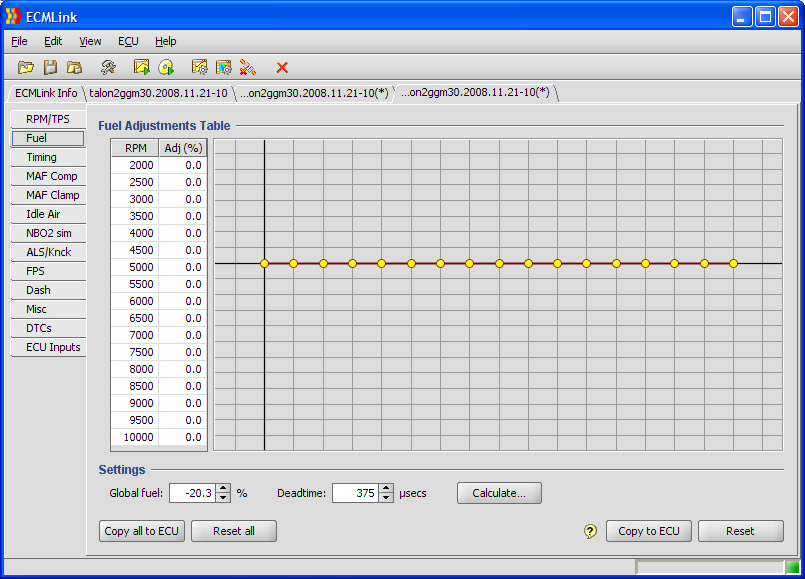 | RPM-based control over fuel. As you will see in DirectAccess, openloop fuel is actually controlled by a table indexed by RPM and load (airflow). When you make changes to the RPM sliders here, ECMLink interpolates the airflow adjustments for you automatically. The documentation in the application describes this in more detail. A basic description of the process for V2 is provided on this page. |
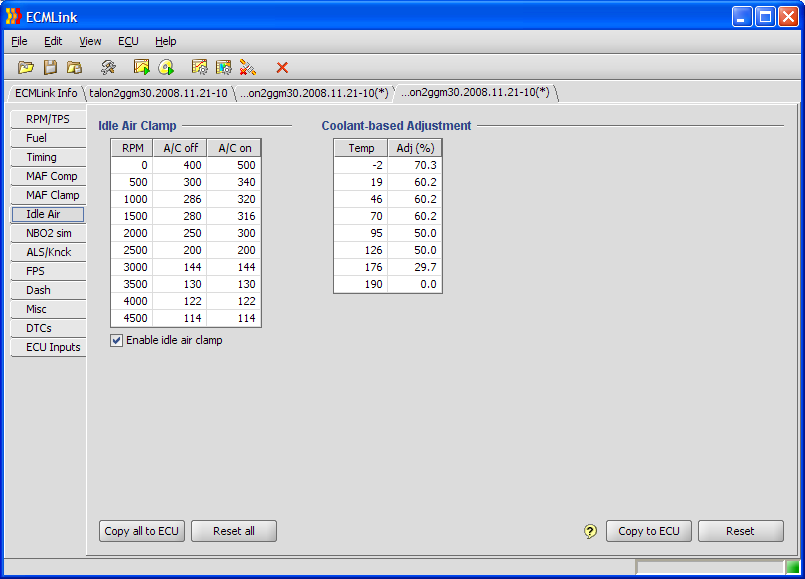 | The idle air clamp is used to place an upper limit on the airflow seen by the ECU when the throttle is closed and the idle switch is active. This is intended to limit the effects of over-reported airflow from disrupted airflow metering (stall on clutch in) or from a BOV vented to atmosphere. |
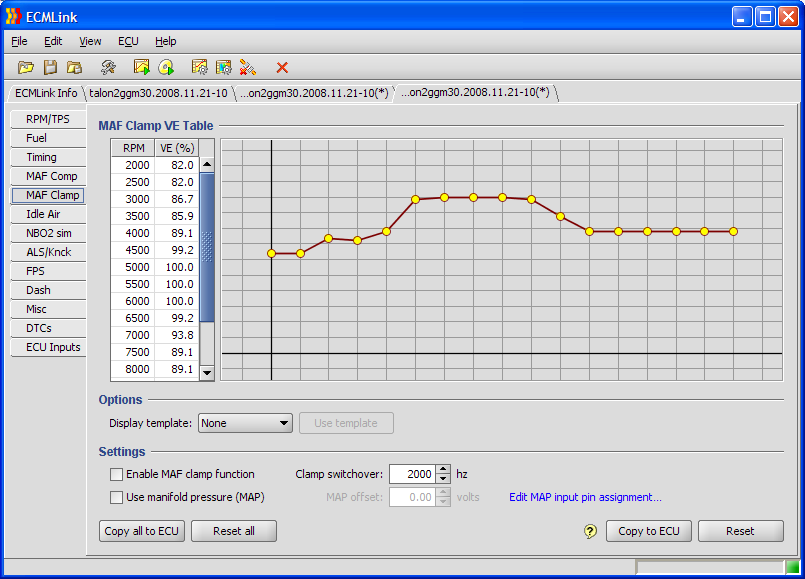 | The MAF Clamp function is probably the slickest yet most under-used function in the application. MAF Clamp is basically a switch over to pseudo speed density just before the point where you might not trust the real MAF signal. You run on a nice, smooth factory MAF most of the time with a switch over to speed density only when necessary. |
 | MAF compensation refers to the adjustments made to the airflow signal coming into the ECU before the reset of the ECU code is allowed to “see” it. The ECU makes a number of decisions based on airflow data and it calculates its basic fuel delivery from airflow. So getting an accurate airflow reading into the ECU is extremely important. The MAF Comp tab provides a way to make these adjustments. |
 | A collection of various “miscellaneous” things that don't really fit anywhere else. For example, activating the fuel pump or simulating the grounding of the timing connector. |
 | Enable narrowband simulation causes the ECU to produce and use a narrowband oxygen sensor signal based on a wideband oxygen sensor unit's signal. The simulated signal is a square wave indicating either richer or leaner than the Wideband switch point. |
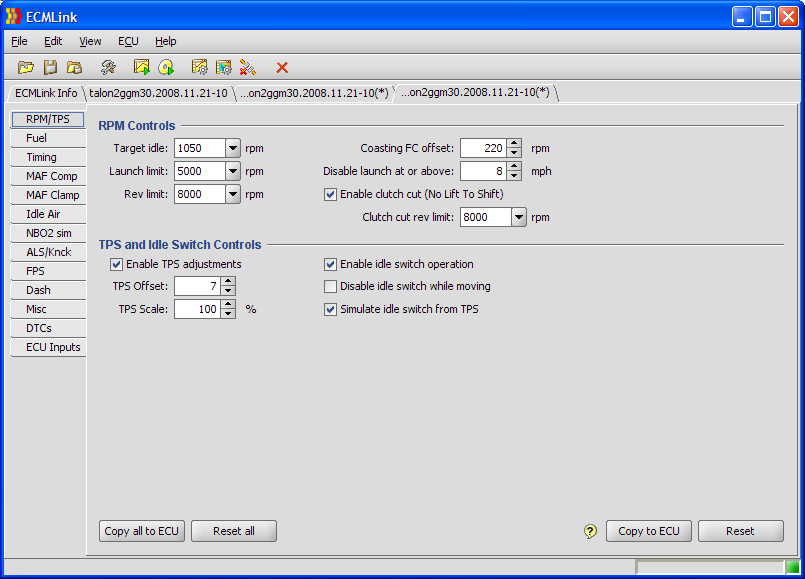 | Basic RPM limits and TPS adjustments. |
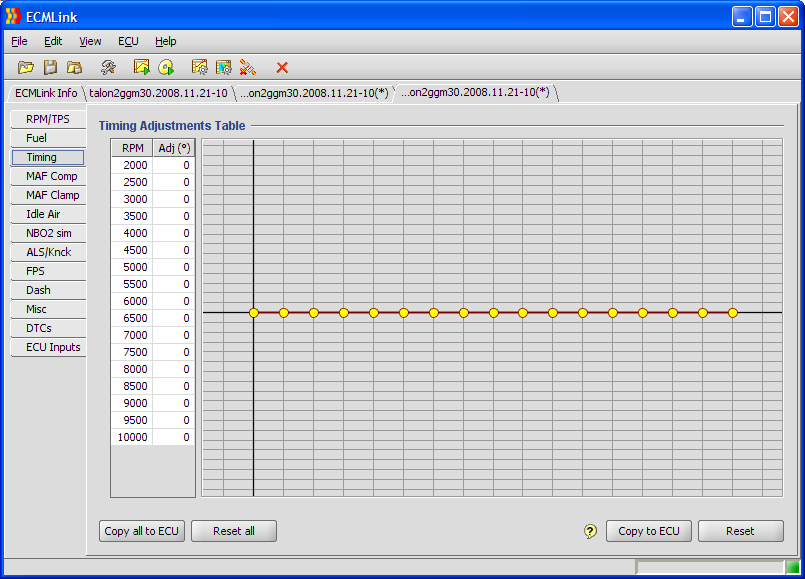 | The Timing Adjustments Table allows rpm-based adjustment of the ignition timing relative to the ECU's stock operation. Moving a point up (or increasing the adjustment value by typing in the numeric table) advances the ignition timing by the indicated number of degrees; lowering it retards the ignition timing. Between rpm points, the ECU interpolates between the two adjacent rpm settings. |
